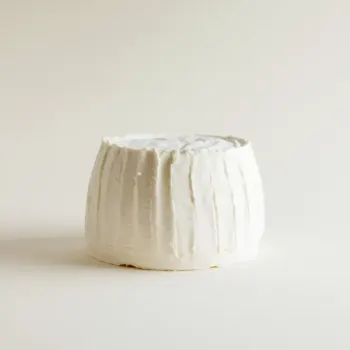Cream Cheese and Sour Cream are two distinct dairy products used in cooking for their unique textures and flavors. Cream Cheese is rich and ideal for spreads and baking, while Sour Cream is tangier and perfect for adding moisture and a creamy acidity to dishes.

Cream Cheese is a soft, mild-tasting cheese with a high fat content. It's made from milk and cream, and its smooth texture is ideal for spreads and dips as well as in baking for rich, dense textures.

Sour Cream is a dairy product obtained by fermenting regular cream with certain kinds of lactic acid bacteria. The bacterial culture, which is introduced either deliberately or naturally, sours and thickens the cream.
The main differences lie in the fat content, with Cream Cheese being richer, and the tangy flavor profile of Sour Cream. Cream Cheese has a smooth, spreadable texture, while Sour Cream is more liquid and used for its creamy acidity.

Your ultimate Recipe Box, Meal Planner, and Cooking Class all in one
Ideal for cheesecakes, frostings, and dense pastries, Cream Cheese adds richness and body to recipes. Expect a velvety, luxurious texture and hints of tang when used in baking. Perfect for imparting moisture and tenderness to baked goods like cakes and muffins, Sour Cream introduces a subtle acidity that can enhance flavors and balance sweetness.
Serves as an excellent base for thick, creamy dips and can be used in sauces to add a smooth, rich texture. It provides a stable, hearty foundation for flavors to build upon. Brings a tangy twist to dips and sauces, and its lighter texture is well-suited for more fluid dressings or as a garnish on soups and tacos.
A key ingredient in frostings and some dessert fillings, its richness complements the sweetness and adds a smooth consistency. Often used to balance the sweetness in desserts like coffee cakes or doughnuts, providing a subtle tang and moist crumb.
Popular as a spread on bagels and in breakfast casseroles, Cream Cheese adds a satisfying richness to start the day. A dollop on scrambled eggs or mixed into pancake batter can enhance breakfast dishes with its creamy texture and slight tanginess.
Both Cream Cheese and Sour Cream are high in fat, with Cream Cheese being higher in calories and fat content per serving.
| Nutrient | Sour Cream ( per Ounce ) | Cream Cheese ( per Ounce ) |
|---|---|---|
| Fat | 6g | 10g |
| Sodium | 13mg | 89mg |
| Calcium | 45mg | 28mg |
| Protein | 1g | 2g |
| Calories | 61 | 99 |
| Carbohydrates | 1g | 1g |
Yes, Cream Cheese can replace Sour Cream in some recipes, especially if you're aiming for a thicker texture. However, you might need to adjust for the lack of tanginess that Sour Cream would provide.
Sour Cream is lower in calories and fat compared to Cream Cheese, but 'healthier' depends on your dietary needs and the context of the overall diet.
Sour Cream can be used as a topping or mixed into the batter for a tangier cheesecake, but it cannot replace Cream Cheese as the main ingredient due to the difference in texture and fat content.
Sour Cream adds moisture and creates a tender crumb in baked goods, as well as enhancing the overall flavor profile with its acidity.
Cream Cheese has a mild, creamy flavor with a slight tang, whereas Sour Cream has a more pronounced tangy flavor due to the lactic acid bacteria used in its production.